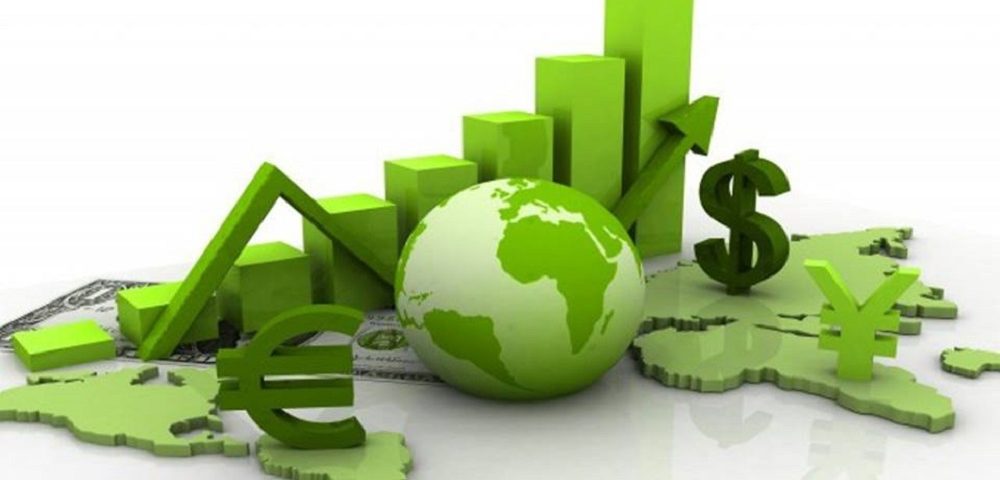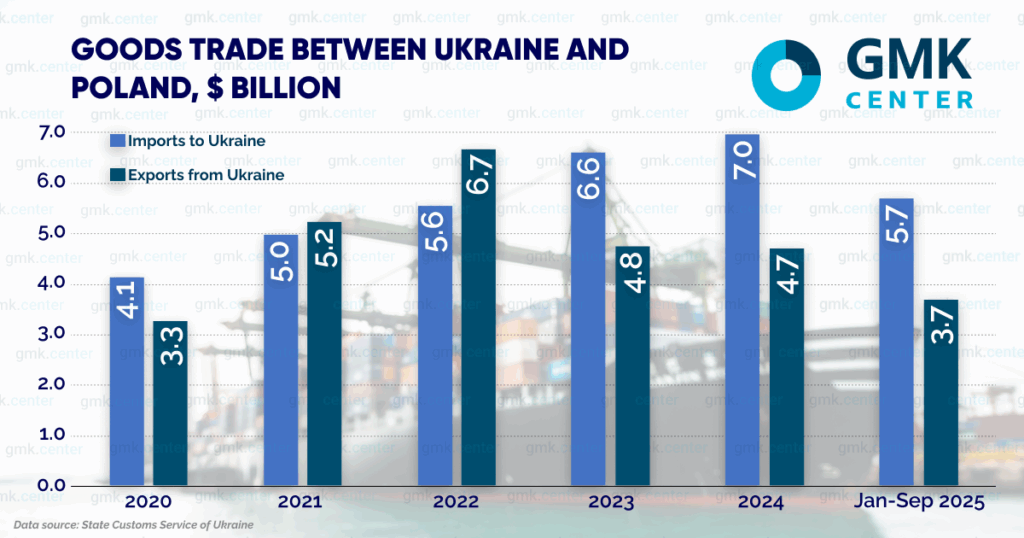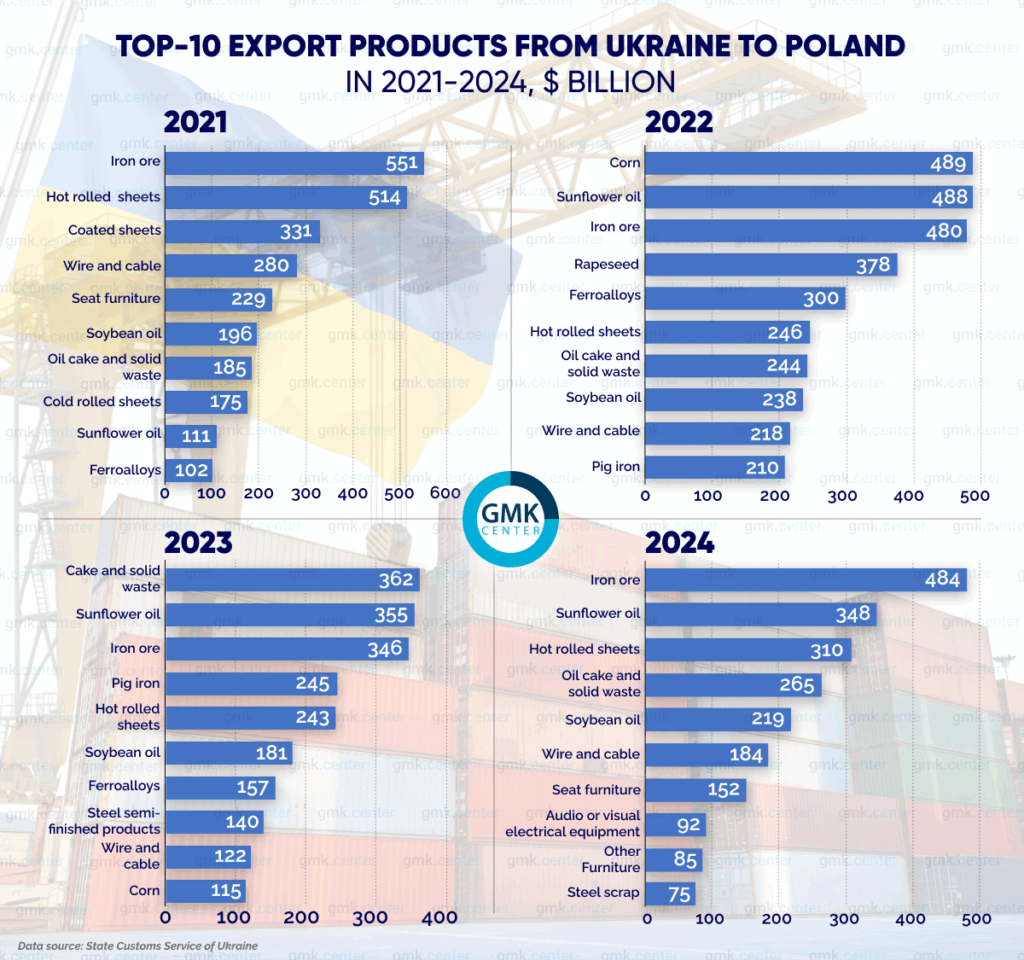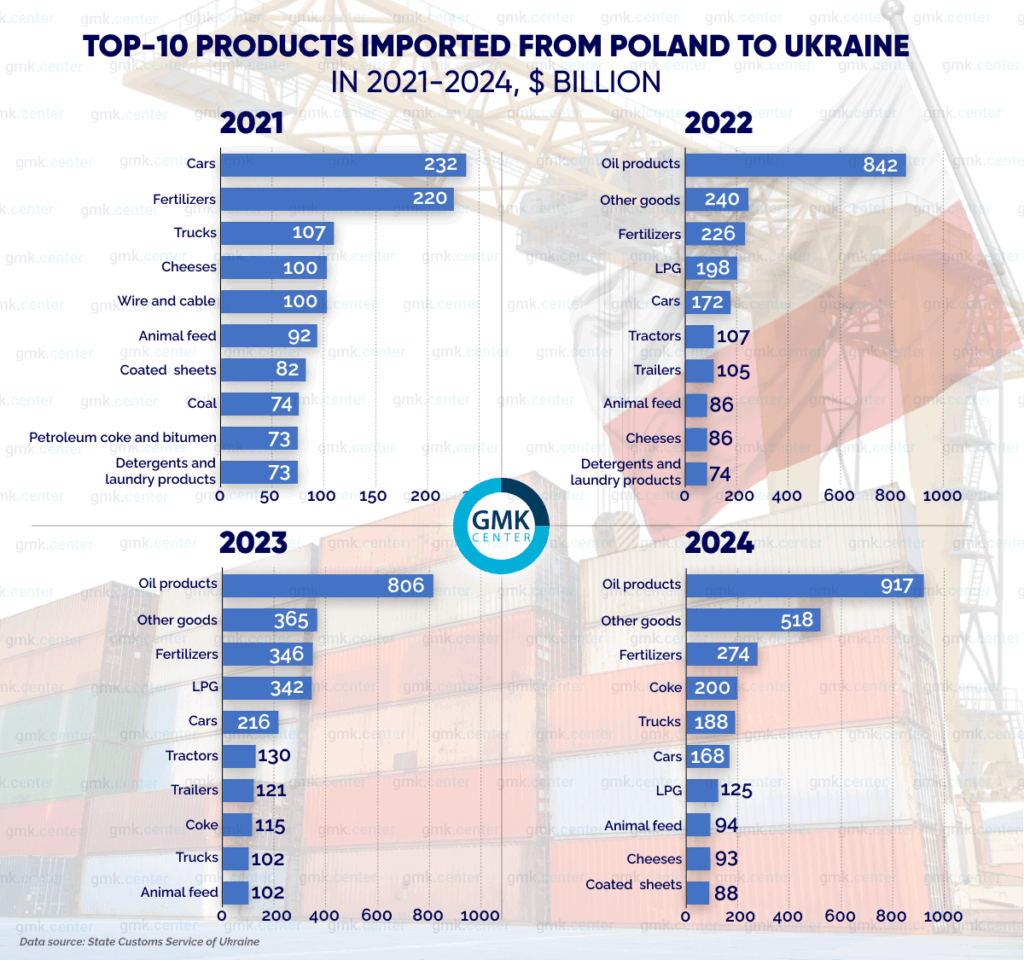Doing business

Since the first year of the war, Poland has become Ukraine’s main logistics and transit center for exports and imports, as well as a supplier of critical products for the functioning of the state and the entire economy. Partly thanks to this, along with the contributions of migrant workers and refugees, Poland is showing economic growth above the European average.
Mutual trade in goods
The volume and structure of trade in goods between Ukraine and Poland has undergone huge changes in recent years, catalysed by war. In 2022, the first year of the war, Ukrainian exports to Poland rose by 27% y/y, reaching $6.7 billion. This increase was driven by the re-routing of trade flows after the closure of Black Sea ports. Later, due to the opening of the grain corridor and then the maritime export corridor in August 2023, exports to Poland expectedly declined – by 28.6% y/y and 1% y/y in 2023 and 2024, respectively. However, in the first nine months of 2025, the growth trend resumed – the volume of Ukrainian exports to Poland increased by 3% y/y – to $3.7 bln.

In turn, imports of goods from Poland to Ukraine have been showing a steady upward trend since the start of the war. From the pre-war level of $5 bln in 2021, this figure increased by 40% by 2024 and reached $7 bln. In January-September this year, imports of goods from Poland increased by another 12% y/y – to $5.7 bln.
The growth is explained by the fact that Poland has become the main logistical and transit hub for Ukrainian trade with the EU and a source of priority supplies in the conditions of war. To a small extent, this is due to the fact that some production facilities of Ukrainian companies have been relocated to Polish territory.
While trade in goods was nearly balanced in 2021, by 2024 Ukraine faced a $2.3 billion trade deficit with Poland. This reflects the transformation of the Ukrainian economy under war conditions: on the one hand, the critical need for imports for the survival of the economy and the front, on the other hand, the return of Ukrainian exports to the usual maritime routes, the ban on agro-products to Poland and limited export opportunities (to a lesser extent) due to the war.
For the Ukrainian economy, trade with Poland and the transit of goods through its territory is a matter of survival in war conditions. Without Polish logistics routes, Ukrainian exports would have dropped catastrophically in the first year of the war. Therefore, the existing deficit of trade in goods with Poland is not fatal for our economy, as understandable economic reasons cause it.
Ukraine supplies Poland with industrial raw materials and agricultural products to a large extent. If in the first year of the war Ukraine was able to redirect large volumes of corn, wheat, rapeseed to the Polish market, then in 2023 Poland began to restrict Ukrainian agricultural exports. Among the products of agro-industrial complex and agro-processing, oilcake, as well as sunflower, soybean, and rapeseed oils remained the export leaders. Among the products with high added value are cable products, furniture and woodworking products, steel products. In 2024, iron and steel products accounted for 28% of Ukraine’s total exports to Poland, totaling $1.3 billion. This included $484 million worth of iron ore.

After the outbreak of war, the structure of Polish imports to Ukraine changed dramatically. Poland began to fill Ukraine’s needs in petroleum products, liquefied gas and war materials, which were critical in the conditions of the war (item «Other goods»). Poland also started supplying goods that became critical for key sectors of the Ukrainian economy due to the war. This includes fertilizers and agricultural machinery for the agri-industrial sector, and coke for the steel industry.
Among civilian products we can mention fertilizers, cars and trucks, machinery, tools and equipment, industrial raw materials and consumer goods. At the same time, road transport was largely used for military needs. In general, Polish imports to Ukraine have a much higher added value than Ukrainian exports.

Economic benefits for Poland
Cooperation with Ukraine has turned Poland into a key player in Eastern Europe and the main logistical hub to support Ukraine. However, Poland derives quite tangible economic benefits from its active trade relations with Ukraine:
If in the last 10-15 years the Polish economy had not received a “boost” in the form of labor migrants and refugees from Ukraine working in the country, the country would probably not have been able to achieve the current level of economic growth. To give an example: in 2022 and 2024, the Polish economy grew by 5.3% y/y and 2.9% y/y respectively, while the EU economy grew by 3.6% y/y and 1% y/y in the same periods. In 2025, Poland’s GDP exceeded $1 trillion, making it the 20th largest economy in the world and paving the way for its eventual entry into the G20. These successes would not have been possible without Ukraine’s contribution.
In the long term, Polish companies may benefit from geographical proximity and established business ties to participate in Ukraine’s post-war reconstruction projects.
However, growing protectionist sentiments and political rhetoric against Ukrainian integration into the EU indicate a shift from strategic partnership to pragmatic use of the situation. This poses risks for both economies and emphasizes the need to diversify Ukrainian trade routes and economic ties.
Source: https://gmk.center